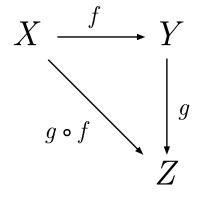Stable ∞-category
In category theory, a branch of mathematics, a stable ∞-category is an ∞-category such that[1]
- (i) It has a zero object.
- (ii) Every morphism in it admits a fiber and cofiber.
- (iii) A triangle in it is a fiber sequence if and only if it is a cofiber sequence.
The homotopy category of a stable ∞-category is triangulated.[2] A stable ∞-category admits finite limits and colimits.[3]
Examples: the derived category of an abelian category and the ∞-category of spectra are both stable.
A stabilization of an ∞-category C having finite limits and base point is a functor from the stable ∞-category S to C. It preserves limit. The objects in the image have the structure of infinite loop spaces; whence, the notion is a generalization of the corresponding notion (stabilization (topology)) in classical algebraic topology.
By definition, the t-structure of a stable ∞-category is the t-structure of its homotopy category. Let C be a stable ∞-category with a t-structure. Then every filtered object in C gives rise to a spectral sequence , which, under some conditions, converges to [4] By the Dold–Kan correspondence, this generalizes the construction of the spectral sequence associated to a filtered chain complex of abelian groups.
Notes
References
- Lurie, J. "Higher Algebra" (PDF). last updated August 2017
